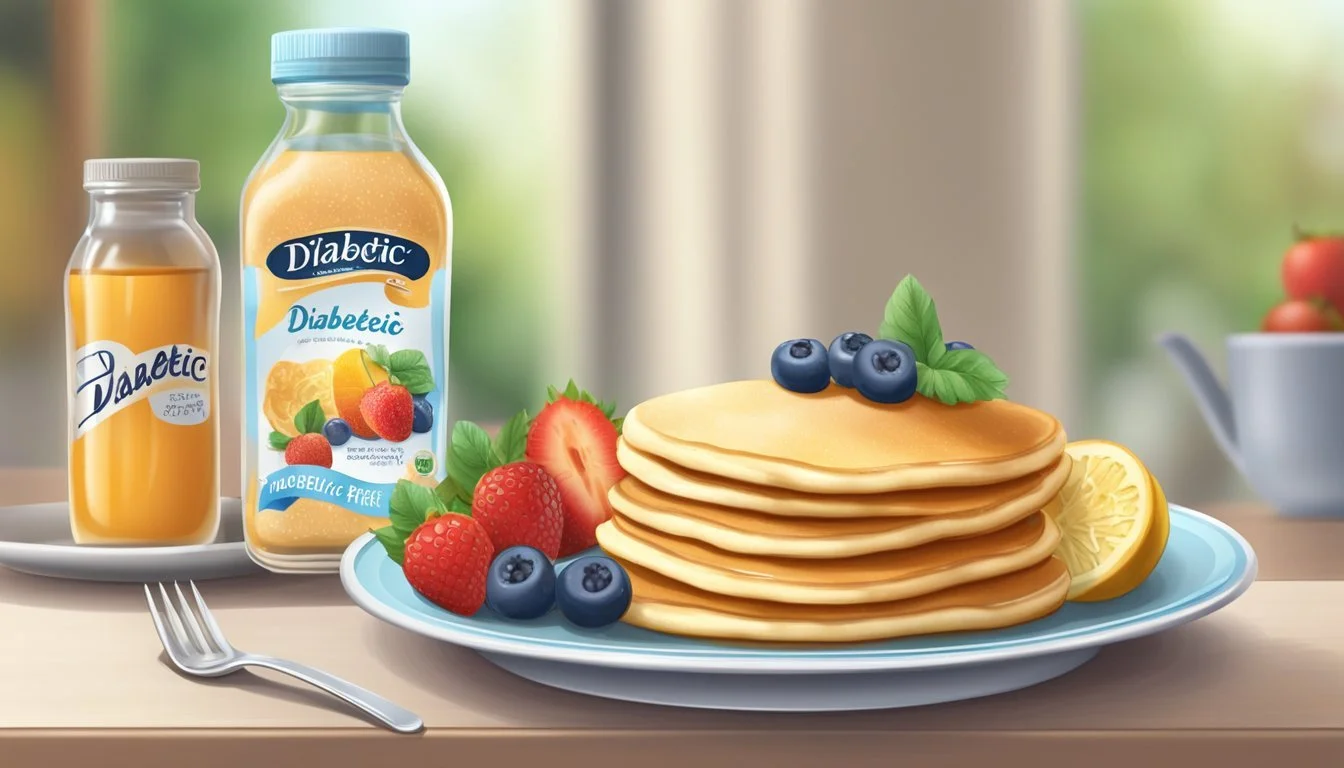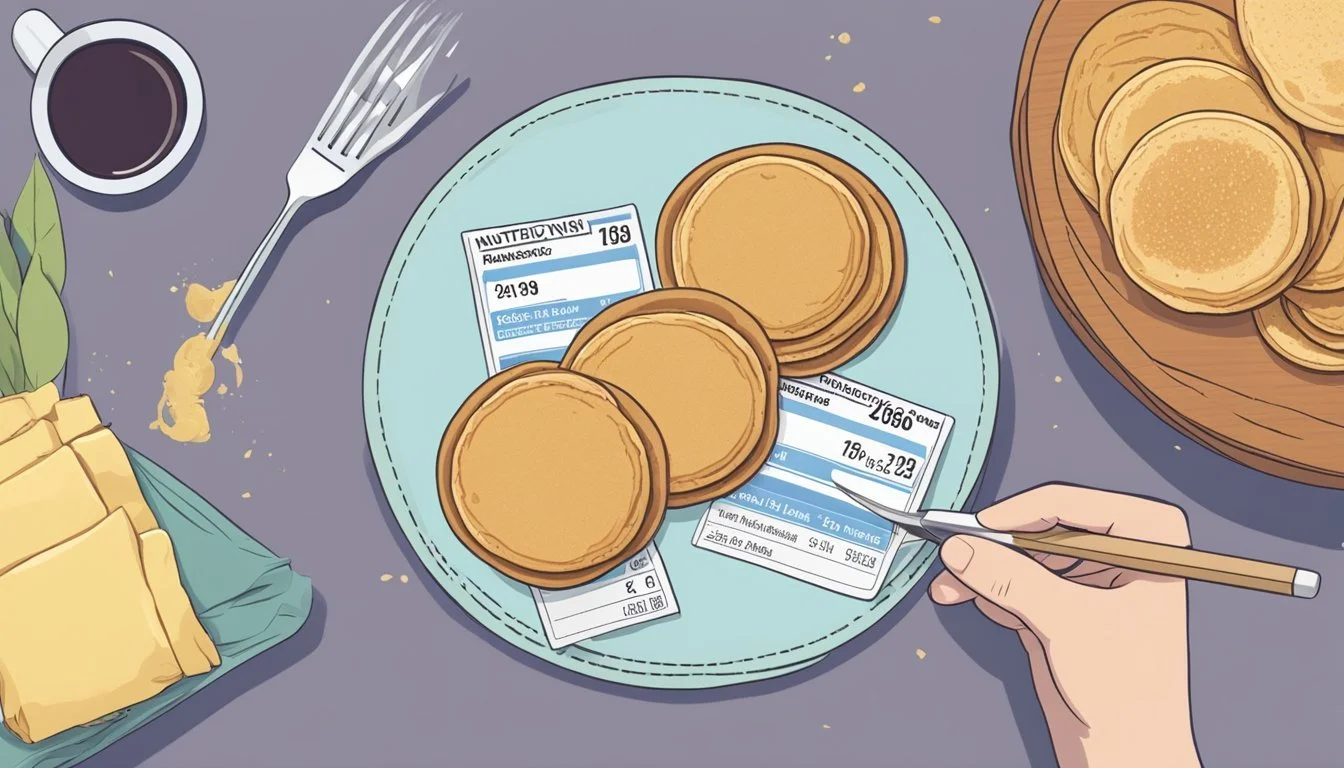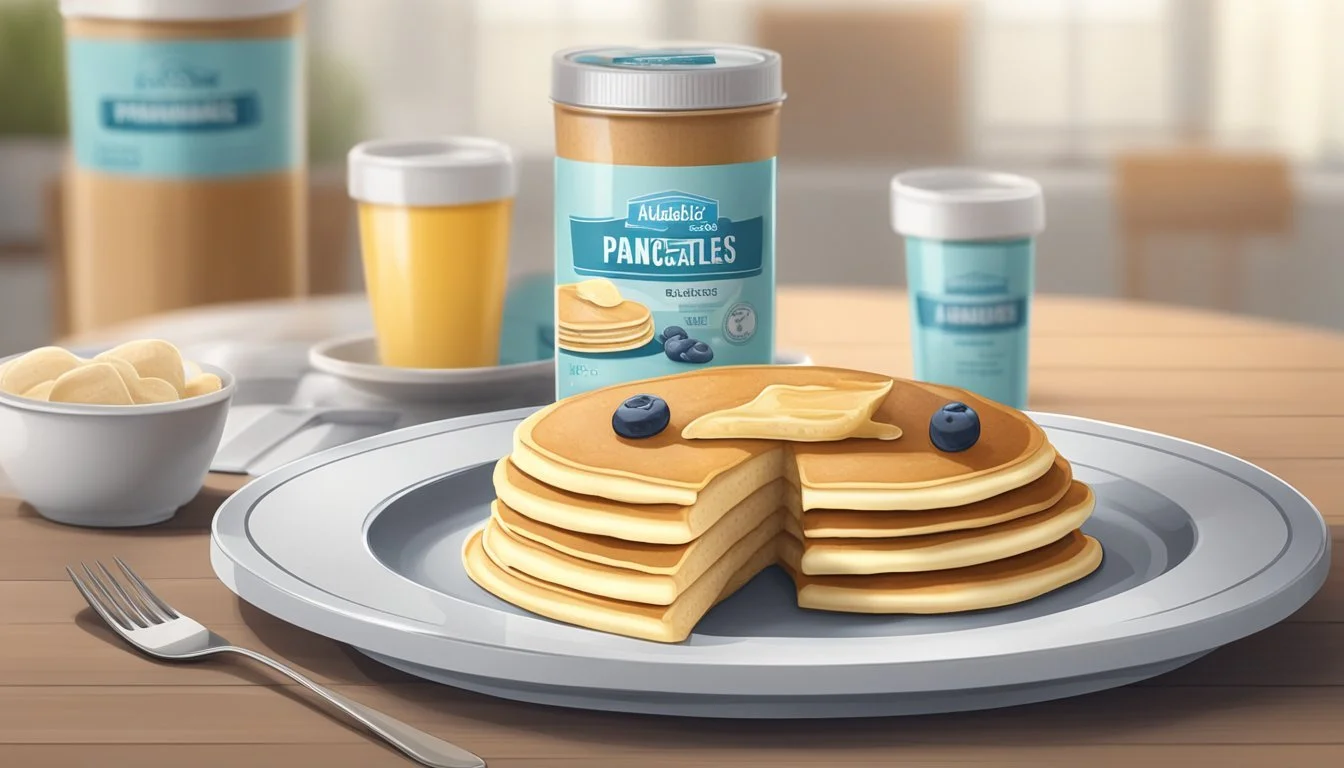Can Diabetics Eat Frozen Pancakes?
Understanding Dietary Impact
Managing diabetes often requires careful consideration of meal choices, and breakfast is no exception. For many, pancakes have long been breakfast staple that can be difficult to give up. This raises the question: Can diabetics eat frozen pancakes?
The answer isn't as straightforward as one might hope. Diabetics can enjoy frozen pancakes if they pay attention to the nutritional content and portion sizes. It’s imperative to opt for pancakes that are low in sugar and carbohydrates, and high in fiber and protein to help manage blood sugar levels effectively.
Moreover, examining the ingredients list for whole grains and avoiding added sugars and unhealthy fats can make frozen pancakes a more suitable option for diabetics. Incorporating healthy toppings such as nuts, seeds, or fresh berries can further enhance their nutritional value.
Understanding Diabetes and Diet
Diabetes management heavily relies on diet. A balanced diet helps maintain stable blood sugar levels. For individuals with diabetes, monitoring carbohydrates intake is crucial due to its impact on blood sugar.
Carbohydrates are the body's primary source of energy. Diabetics must eat carbs cautiously. The amount and type of carbs influence insulin response. Foods with a low glycemic index (GI) can help prevent spikes in blood glucose.
Key Dietary Considerations:
Carb Counting: Accurate tracking of carbohydrate intake helps in regulating blood sugar.
Glycemic Index: Choosing low to moderate GI foods can assist in maintaining stable glucose levels.
Nutrient-Dense Foods: A diet rich in vitamins, minerals, and fiber supports overall health.
Lifestyle Adjustments:
Regular Meals: Eating at consistent times aids in keeping blood sugar levels steady.
Physical Activity: Regular exercise helps in improving insulin sensitivity.
Hydration: Drinking plenty of water can assist in better glucose management.
Recommended Foods:
Whole Grains: Brown rice, quinoa, and whole wheat are preferable over refined grains.
Vegetables: Non-starchy vegetables like leafy greens, peppers, and broccoli.
Proteins: Lean meats, fish, tofu, and legumes.
Foods to Limit:
Sugary Drinks: These can cause rapid spikes in blood glucose.
High-GI Foods: White bread, pastries, and other highly processed foods.
Managing diabetes is a lifelong commitment that requires careful attention to diet, regular monitoring of blood sugar levels, and maintaining a healthy lifestyle. Dietary choices play a significant role in effectively managing diabetes.
Analyzing Pancake Ingredients
Knowing the components of pancakes is crucial for diabetics. By understanding the ingredients, healthier choices can be made to ensure a balanced diet that helps in managing blood sugar levels effectively.
Flour Alternatives
Flour is the base of pancake recipes, but traditional all-purpose flour can spike blood sugar levels. Diabetics should consider almond flour, coconut flour, and oat flour.
Almond Flour: Low in carbs, high in protein and healthy fats, almond flour is a good option. It adds a slightly nutty flavor and provides essential nutrients like vitamin E.
Coconut Flour: Rich in fiber, coconut flour is another low-carb option. It absorbs more liquid, so recipes might need adjustments in liquid ingredients.
Oat Flour: Made from ground oats, oat flour contains more fiber and protein than traditional flour. It can help with better blood sugar control and offers a hearty texture.
Choosing Healthy Fats
Fats are essential for making pancakes tender and flavorful. Diabetics should opt for healthy fats instead of saturated and trans fats.
Olive Oil: This monounsaturated fat can help lower bad cholesterol levels and is heart-friendly.
Canola Oil: Another good option, canola oil is low in saturated fats and high in omega-3 fatty acids.
Coconut Oil: Provides a rich flavor with healthy fats, but it is higher in saturated fat. Use it in moderation.
Incorporating Protein
Protein-rich ingredients can make pancakes more filling and nutritious. Adding sources of lean protein can stabilize blood sugar levels.
Greek Yogurt: High in protein, Greek yogurt adds creaminess and a slight tanginess to the batter.
Eggs: Common in pancake recipes, eggs provide protein and help bind the ingredients together.
Cottage Cheese: Another high-protein option, cottage cheese adds a creamy texture and works well with sweet or savory toppings.
Selecting Low-Carb Sweeteners
Sugar can cause significant blood sugar spikes. Diabetics should consider low-carb sweeteners like:
Stevia: A natural sweetener that doesn't affect blood sugar levels. It is much sweeter than sugar, so less is needed.
Erythritol: A sugar alcohol that offers sweetness without spiking blood sugar. It can be used in place of sugar in baking.
Monk Fruit Extract: Another natural sweetener with zero calories and a low glycemic index.
Adding Fiber-Rich Options
Fiber is beneficial for slowing down glucose absorption and improving digestion. Incorporating fiber-rich ingredients into pancake recipes can enhance their nutritional value.
Chia Seeds: High in fiber and omega-3 fatty acids. They can be mixed into the batter or sprinkled on top.
Flax Seeds: Also high in fiber and omega-3s, flax seeds add a slight nutty flavor and extra nutrients.
Whole Wheat Flour: If looking for a more traditional flour, whole wheat flour contains more fiber than all-purpose flour.
Minimizing Unhealthy Additives
Avoiding unhealthy additives can make pancakes healthier and safer for diabetics.
Saturated and Trans Fats: Replace butter and margarine with heart-healthy oils like olive oil or avocado oil.
High Sodium: Limit salt and use baking powder and baking soda in moderation to prevent high sodium content.
Artificial Ingredients: Opt for natural and whole ingredients to avoid unnecessary additives.
Considering Milk Substitutes
Milk is a common ingredient in pancakes, but some types can be high in sugar. Diabetics should consider milk substitutes like:
Almond Milk: Lower in calories and sugar compared to cow's milk. It adds a nutty flavor and creamy texture.
Soy Milk: A higher protein milk alternative that's close to cow's milk in texture.
Nut Milk: Various nut milks like cashew milk provide different flavors and nutritional benefits.
Utilizing Healthy Toppings
The choice of pancake toppings can significantly alter their health impact. Opt for nutrient-dense options.
Fresh Fruit: Berries like blueberries and strawberries are rich in antioxidants and fiber.
Nut Butter: Almond butter, peanut butter, and other nut butters add healthy fats and protein.
Avocado: A creamy and savory topping rich in healthy fats.
Plain Greek Yogurt: Offers extra protein and a creamy texture.
When creating or choosing frozen pancakes, paying attention to these key ingredients can help make healthier choices suitable for managing diabetes.
Nutritional Breakdown of Frozen Pancakes
Frozen pancakes can be a convenient breakfast option, particularly for those with a busy lifestyle. It is essential to understand their nutritional values to manage dietary needs, especially for diabetics.
Three servings of frozen buttermilk pancakes (like Great Value brand) contain approximately 270 calories. These calories are divided among different macronutrients:
Carbohydrates: Around 71%, contributing significantly to the caloric content.
Fat: Around 20%, providing essential fatty acids and aiding in satiety.
Protein: Around 9%, necessary for muscle maintenance and overall health.
Here is a simple table summarizing the macronutrient breakdown:
Nutrient Percentage Approximate Amount per 3 servings Carbohydrates 71% ~192g (per 3 servings) Fat 20% ~54g (per 3 servings) Protein 9% ~24g (per 3 servings)
Frozen pancakes from this brand are also a good source of calcium (20% Daily Value) and vitamin A (20% Daily Value), which are important for bone health and vision, respectively.
Diabetics should focus particularly on the carbohydrate content, as carbs have the most significant impact on blood sugar levels. A serving of frozen buttermilk pancakes usually contains about 30 grams of carbs, where monitoring and appropriate insulin dosage can help manage blood sugar spikes effectively.
Incorporating frozen pancakes into a diabetic-friendly diet requires careful balance and portion control to meet individual nutritional needs.
Impact of Frozen Pancakes on Blood Sugar Levels
Frozen pancakes can have a significant impact on blood sugar levels, particularly in those with diabetes.
A key factor to consider is the glycemic index (GI). Frozen pancakes often have a higher GI, leading to rapid spikes in blood sugar. Individuals need to be aware of how these pancakes affect their glucose levels.
Portion control is crucial. Eating large portions can cause higher carbohydrate intake, which increases blood sugar levels. It’s important to monitor serving sizes meticulously.
Ingredients also play a vital role. Frozen pancakes made from refined flour tend to have a higher GI than those made from whole grains. Reading nutrition labels helps evaluate the carbohydrate content and choose healthier options.
The effect on insulin needs attention. Quick spikes in blood sugar can lead to increased insulin needs. Diabetics should adjust their insulin dosing according to the carbohydrate content of the pancakes they consume.
Alternative options like low-carb or high-protein frozen pancakes can help minimize blood sugar fluctuations. For example:
Type Carbs per serving Notes Buttermilk Frozen Pancakes 30g Higher GI, may cause spikes Whole-grain Frozen Pancakes 20g Lower GI, better for blood sugar Keto Frozen Pancakes 5g Low-carb, minimal impact
Balancing carbohydrate intake and understanding the glycemic load can help manage post-meal blood sugar levels effectively. Selecting the right type of frozen pancakes and monitoring their effects is vital for maintaining stable blood sugar.
Healthy Alternatives to Frozen Pancakes
Exploring healthy alternatives to frozen pancakes can be rewarding for individuals managing diabetes. From homemade recipes to store-bought options and creative breakfast ideas, there are numerous ways to enjoy a delicious, diabetes-friendly breakfast.
Homemade Diabetic-Friendly Recipes
Making pancakes at home allows for greater control over ingredients, ensuring they are both nutritious and tasty. Low-carb pancakes using almond flour or nut flour significantly reduce carbohydrate intake, benefiting blood sugar levels. Adding chia seeds or fiber-rich ingredients can enhance the satiety and nutrient content.
Protein pancakes, often made with high-protein ingredients like eggs and Greek yogurt, provide a balanced breakfast option with improved blood sugar stability. Sweeteners like stevia can replace sugar without spiking blood sugar. Additionally, topping pancakes with fresh fruits such as berries adds natural sweetness and vitamins.
Store-Bought Diabetes-Friendly Options
For those who prefer convenience, several store-bought diabetes-friendly options make great alternatives to traditional frozen pancakes. Brands now offer low-carb and gluten-free pancakes, often marketed for their health benefits. Look for products rich in protein and fiber.
For example, Frontera Chicken Fajita Bowl and Real Good Foods Lasagna Bowl are good meal options. These products often use nut flours to cut down on carbs and might incorporate Greek yogurt or milk for added protein. Reading labels to check for added sugars and unhealthy fats is essential to choosing the best products.
Creative Breakfast Options Beyond Pancakes
Diversifying breakfast options can help manage diabetes more effectively. Green smoothies, made with a blend of fresh fruits, leafy greens, and a source of protein like Greek yogurt, can be a refreshing and nutritious start to the day.
Oatmeal is another excellent alternative. Using steel-cut oats, adding chia seeds or berries, and sweetening with stevia offers a fiber-rich meal that helps maintain steady blood sugar levels. Healthy crepes, made from low-carb flours, also provide versatility. They can be filled with fresh fruits, Greek yogurt, or even savory ingredients like eggs and vegetables.
By varying breakfast choices and focusing on the right ingredients, it is possible to enjoy a satisfying meal while managing diabetes effectively.
Preparing Diabetes-Friendly Pancakes at Home
Creating diabetes-friendly pancakes at home can help manage blood sugar levels and ensure a balanced intake of essential nutrients. This section covers the selection of ingredients, cooking methods, recipes for specific dietary needs, portion control, and topping ideas tailored for those with diabetes.
Selecting the Right Ingredients
Choosing the right ingredients is vital for making diabetes-friendly pancakes. Opt for flour alternatives such as almond flour and oat flour, which offer lower carbs and higher fiber.
Common Ingredients:
Almond Flour: Low in carbs, high in protein and fiber.
Oat Flour: Provides a balance of fiber and essential nutrients.
Baking Powder: Helps make the pancakes fluffier.
Ensure to use unsweetened almond milk or other low-carb milk options. Sweeteners like stevia or erythritol can substitute sugar without spiking blood sugar levels.
Cooking Techniques for Healthier Pancakes
Using appropriate cooking methods can further reduce calorie intake and improve the nutritional profile. Utilize a non-stick pan to minimize the use of oils and fats.
Non-Stick Pan: Reduces the need for additional fats.
Almond Milk: Instead of regular milk, for fewer carbs.
Low Heat: Cooking on low or medium heat ensures even cooking and prevents burning.
You may also bake the pancakes in the oven to avoid the need for frying. This method can help cut down on unwanted fats and calories.
Recipes for Different Dietary Needs
Catering to various dietary restrictions can ensure everyone enjoys pancakes. Here are a few recipes:
Low-Carb Chocolate Protein Pancakes: Almond flour, whey protein, almond milk, eggs, baking powder, and cocoa powder. This recipe keeps carbs low while adding protein sources.
Gluten-Free Almond Flour Pancakes: Almond flour, eggs, almond milk, and baking powder. Perfect for those sensitive to gluten.
Oat Flour Pancakes: Oat flour, unsweetened almond milk, eggs, and a dash of cinnamon for flavor.
Each recipe is designed to maintain stable blood sugar levels and provide essential nutrients.
Tips for Portion Control and Serving Size
Portion control plays a significant role in managing diabetes. Measure the ingredients carefully to avoid excessive portions.
Serving Size: Stick to a standard serving of 2-3 medium pancakes.
Measuring Tools: Use a pancake batter dispenser for consistency.
Small Plates: Serve on smaller plates to visually enhance portion size.
Incorporate sides like fresh berries, which add fiber and minimal carbs, to create a filling meal without overeating.
Innovative Topping Ideas
Toppings can transform pancakes into a nutritious meal without adding extra sugar. Opt for diabetic-friendly toppings:
Fresh Fruit: Berries and sliced apples provide natural sweetness and fiber.
Nut Butter: Almond butter or peanut butter adds protein and healthy fats.
Chia Seeds: Sprinkle for added fiber and omega-3 fatty acids.
Sugar-Free Syrup: Brands like Walden Farms offer sugar-free options.
Avoid traditional syrups loaded with sugar to keep glycemic impact minimal. Experiment with these toppings to maintain a delicious yet healthy breakfast.
Lifestyle Considerations for Diabetics
Maintaining a healthy lifestyle is crucial for managing diabetes effectively. This includes strategies for managing weight and understanding the role of exercise.
Weight Management Strategies
Weight management plays an important role in controlling blood sugar levels. A balanced diet that emphasizes high-fiber foods, such as vegetables, fruits, whole grains, and legumes, can help.
Reducing carbohydrate intake can also be beneficial, focusing on complex carbs over simple sugars. Consuming healthy fats like those found in nuts, seeds, and fish can improve cholesterol levels.
Regular monitoring of weight and adjustment of eating patterns based on blood glucose readings and insulin needs is essential. For those who are overweight, even a modest weight loss can have significant positive effects on diabetes management.
Understanding the Role of Exercise
Exercise improves insulin sensitivity and helps lower blood sugar levels. Aerobic exercises such as walking, swimming, and cycling are highly recommended.
Strength training also plays a critical role as it helps build muscle mass, which can enhance insulin utilization.
Regular exercise helps in weight control, reducing cholesterol, and lowering blood pressure, all important aspects of managing diabetes.
Incorporate physical activities into daily routines, aiming for at least 150 minutes of moderate-intensity exercise per week. Safety considerations, such as checking blood sugar levels before and after exercise and staying hydrated, are also important.
Conclusion
Frozen pancakes can be an option for individuals with diabetes when approached thoughtfully. Portion control is vital, and choosing whole-grain options over refined flour can be beneficial.
Monitoring the total carbohydrate intake is crucial. Often, frozen pancakes can contain added sugars and preservatives, so it is essential to read the nutritional labels carefully.
Pairing frozen pancakes with protein-rich foods like eggs can help manage blood sugar levels. Healthy toppings such as fresh fruits or nuts rather than syrup can also enhance the meal’s nutritional value.
Incorporating the insights from dietitians and diabetes-friendly recipes is advisable. Small adjustments, like adding protein powder or using sugar substitutes, can make frozen pancakes a viable breakfast option for diabetics.
Finally, always consult a healthcare professional or dietitian when making significant changes to the diet, ensuring the choices align with personal health goals and needs.







